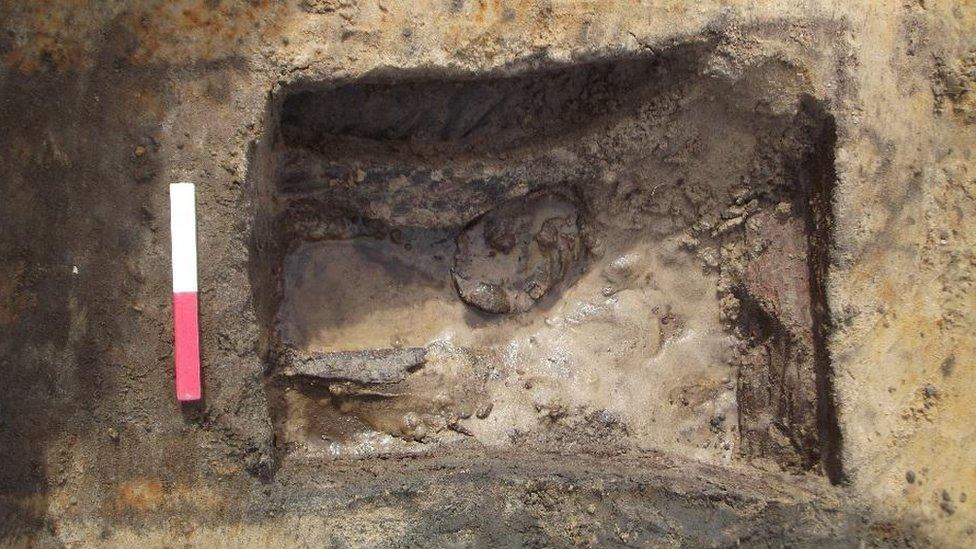Eyam plague: The village of the damned
- Published
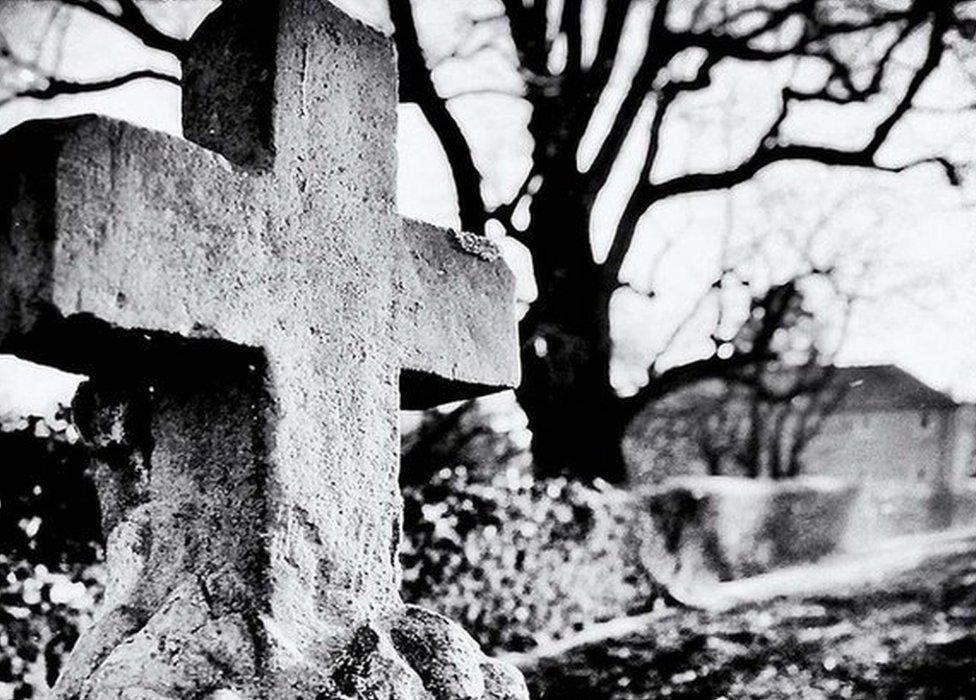
The village of Eyam saw 260 of its residents killed by the plague
On 1 November 1666 farm worker Abraham Morten gasped his final breath - the last of 260 people to die from bubonic plague in the remote Derbyshire village of Eyam. Their fate had been sealed four months earlier when the entire village made the remarkable decision to quarantine itself in an heroic attempt to halt the spread of the Great Plague. This is the story of the villagers who refused to run.
Abraham was in his late 20s when he died. He was one of 18 Mortens listed as plague victims on the parish register.
But the story of the plague in Eyam had begun 14 months earlier, with the arrival of a bale of cloth sent from London, where the disease had already killed thousands of inhabitants.
Contained in the bale of damp cloth were fleas carrying the plague.
A tailor's assistant called George Viccars was said to have opened the bale and hung the cloth in front of the hearth to dry, unwittingly stirring the disease-ridden fleas contained within the parcel.
He became the first of the plague's victims in the village.
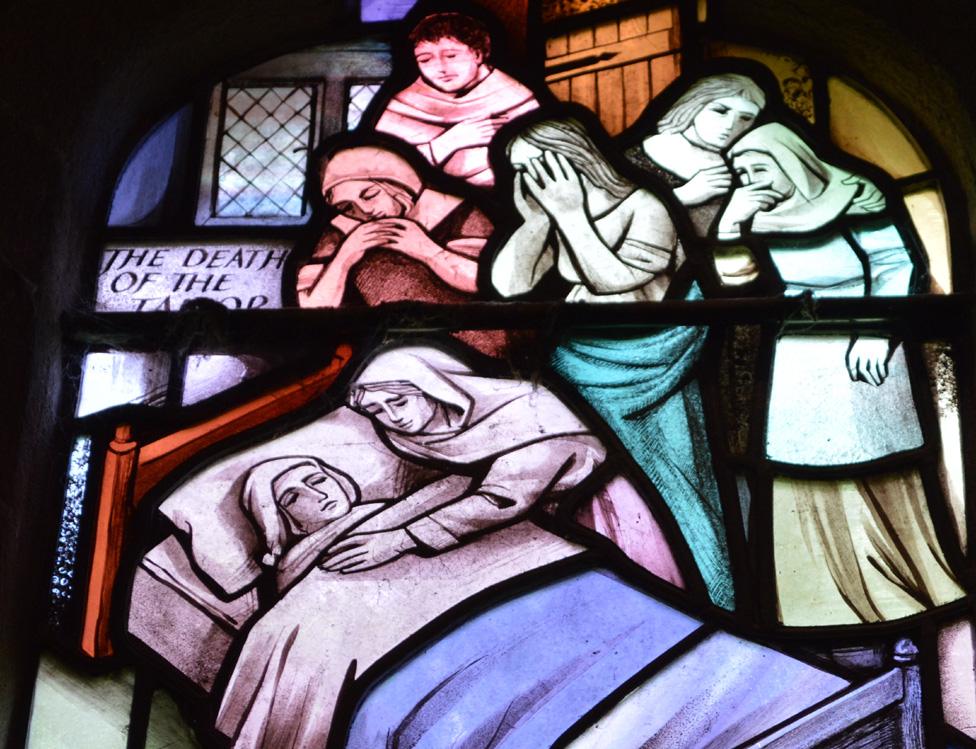
George Viccars was Eyam's first victim of the plague - he died in horrible agony on 7 September 1665
"That poor man was just visiting Eyam to help make clothes for Wakes Week [a religious festival] - and sadly never left," said Eyam churchwarden Joan Plant, who has researched the story.
The pestilence swept through the community. Between September and December 1665, 42 villagers died and by the spring of 1666, many were on the verge of fleeing their homes and livelihoods to save themselves.
It was at this point that the newly appointed rector, William Mompesson, intervened. Believing it his duty to prevent the plague spreading to the nearby towns of Sheffield and Bakewell, he decided the village should be quarantined.
However, as if persuading his parishioners to sacrifice their lives was not difficult enough, he had another problem - he was already deeply unpopular with the villagers.

William Mompesson took it upon himself to convince the remaining villagers to stay
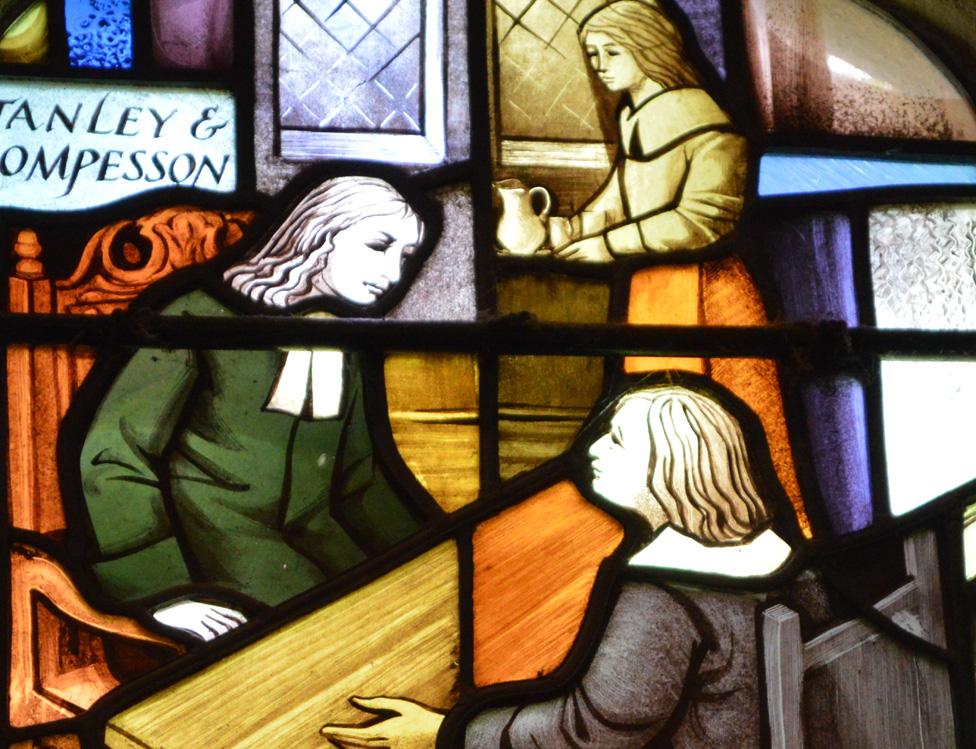
Stanley met Mompesson at the rectory he had previously occupied before being evicted
He had been sent to Eyam in April 1664 after the previous rector, Thomas Stanley, was removed. Stanley had refused to acknowledge the 1662 Act of Uniformity, which made it compulsory to use the Book of Common Prayer, introduced by Charles II, in religious services.
Stanley, along with the majority of people in Eyam, had been supporters of Oliver Cromwell and his Puritan government, prior to the restoration of the monarchy in 1660.
Mompesson, realising he would need help, decided to reach out to Stanley in the hope that he could persuade the villagers to carry out his plan.
"Stanley was living in exile on the edge of the village, having been effectively kicked out, and the parishioners didn't like, or trust, Mompesson," said Ken Thompson, historian and chairman of Eyam Museum.
"However, they agreed to meet and the plan they devised was remarkable."
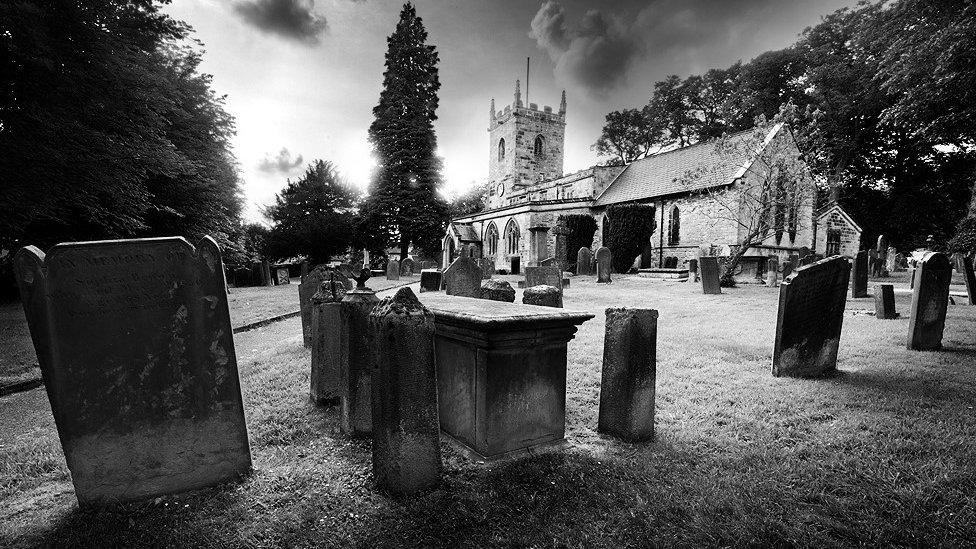
After the plague returned in the summer of 1666 burials in St Lawrence's churchyard were stopped
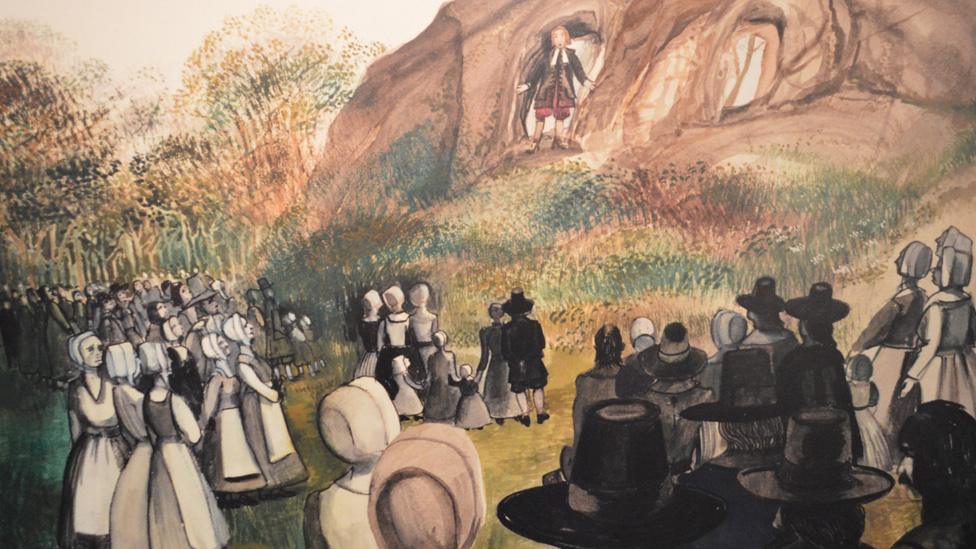
Services were held in the open air at Cucklet Delf and families stood apart from each other to avoid the spread of infection
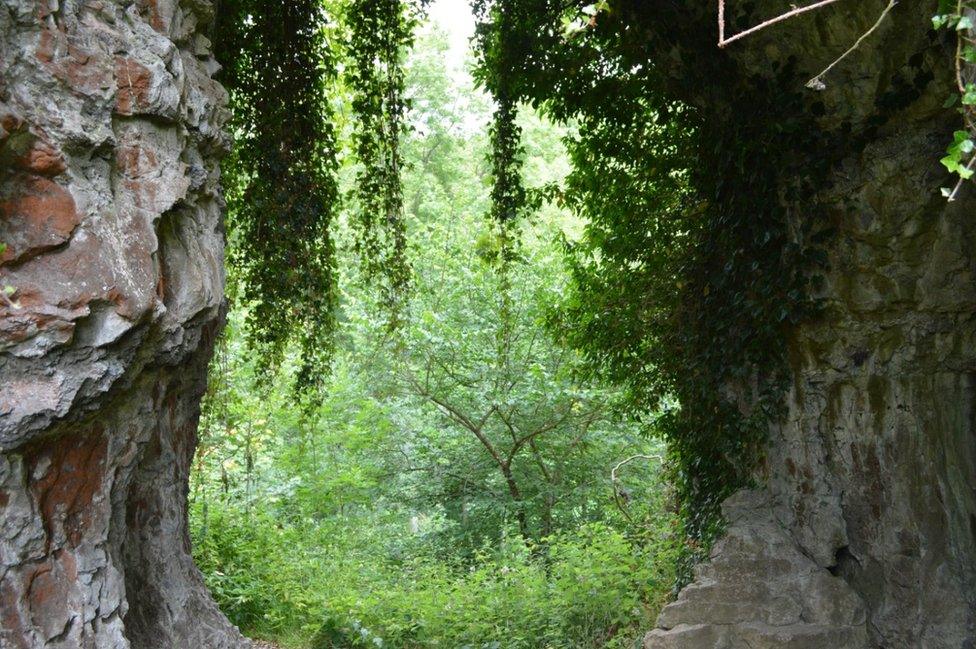
Cucklet Delf is a short walk from the village centre
On 24 June 1666, Mompesson told his parishioners that the village must be enclosed, with no-one allowed in or out.
He said the Earl of Devonshire, who lived nearby at Chatsworth, had offered to send food and supplies if the villagers agreed to be quarantined.
Mompesson said if they agreed to stay - effectively choosing death - he would do everything in his power to alleviate their suffering and remain with them, telling them he was willing to sacrifice his own life rather than see nearby communities decimated.
His wife, Catherine, recorded in her diary: "It might be difficult to predict the outcome because of the resentment as to William's role in the parish, but considering that the Revd Stanley was now stood at his side, perhaps he would gain the support necessary to carry the day."
During the meeting, there were many misgivings over the wisdom of his plan, she wrote.
However, she concluded that with help from Stanley - who had stated that a "cordon sanitaire" was the most effective way of dealing with the plague - the remaining villagers reluctantly agreed to the plan.

The Black Death
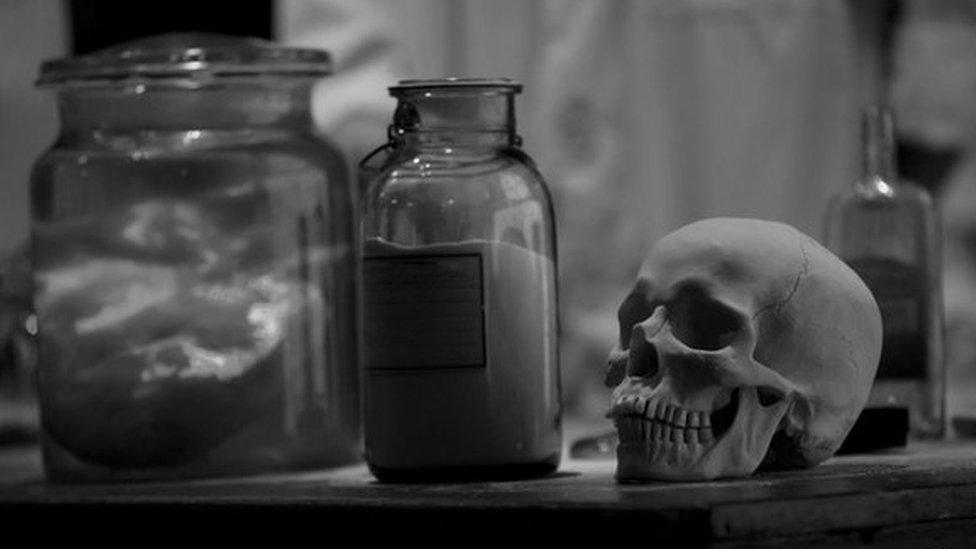
Plague has a case-fatality ratio of 30%-60% if left untreated
It was known as the Black Death during the 14th Century, and caused an estimated 50 million deaths
People infected with plague usually develop flu-like symptoms after an incubation period of 3-7 days
There are three forms of plague infection: bubonic, septicaemic and pneumonic. Bubonic, characterised by painful swollen lymph nodes - buboes - is the most common form
Plague still is endemic in many countries, including in Madagascar, the Democratic Republic of Congo and Peru
In 2013, there were 783 cases reported worldwide, causing 126 deaths
Source: World Health Organisation

Dr Michael Sweet, a wildlife disease specialist at the University of Derby, said: "The decision to quarantine the village meant that human-to-human contact, especially with those outside of the village was basically eliminated which would have certainly significantly reduced the potential of the spread of the pathogen.
"Without the restraint of the villagers many more people, especially from neighbouring villages, would have more than likely have succumbed to the disease.
"It is remarkable how effective the isolation was in this instance," he added.
August 1666 saw the highest number of victims, reaching a peak of five or six deaths a day. The weather was remarkably hot that summer, which meant the fleas were more active, and the pestilence spread unchecked throughout the village.
Despite this, hardly anyone broke the cordon; even those who were reluctant to stay saw it through.
The same month, Elizabeth Hancock buried six of her children and her husband close to the family farm. They had all perished in the space of just eight days.
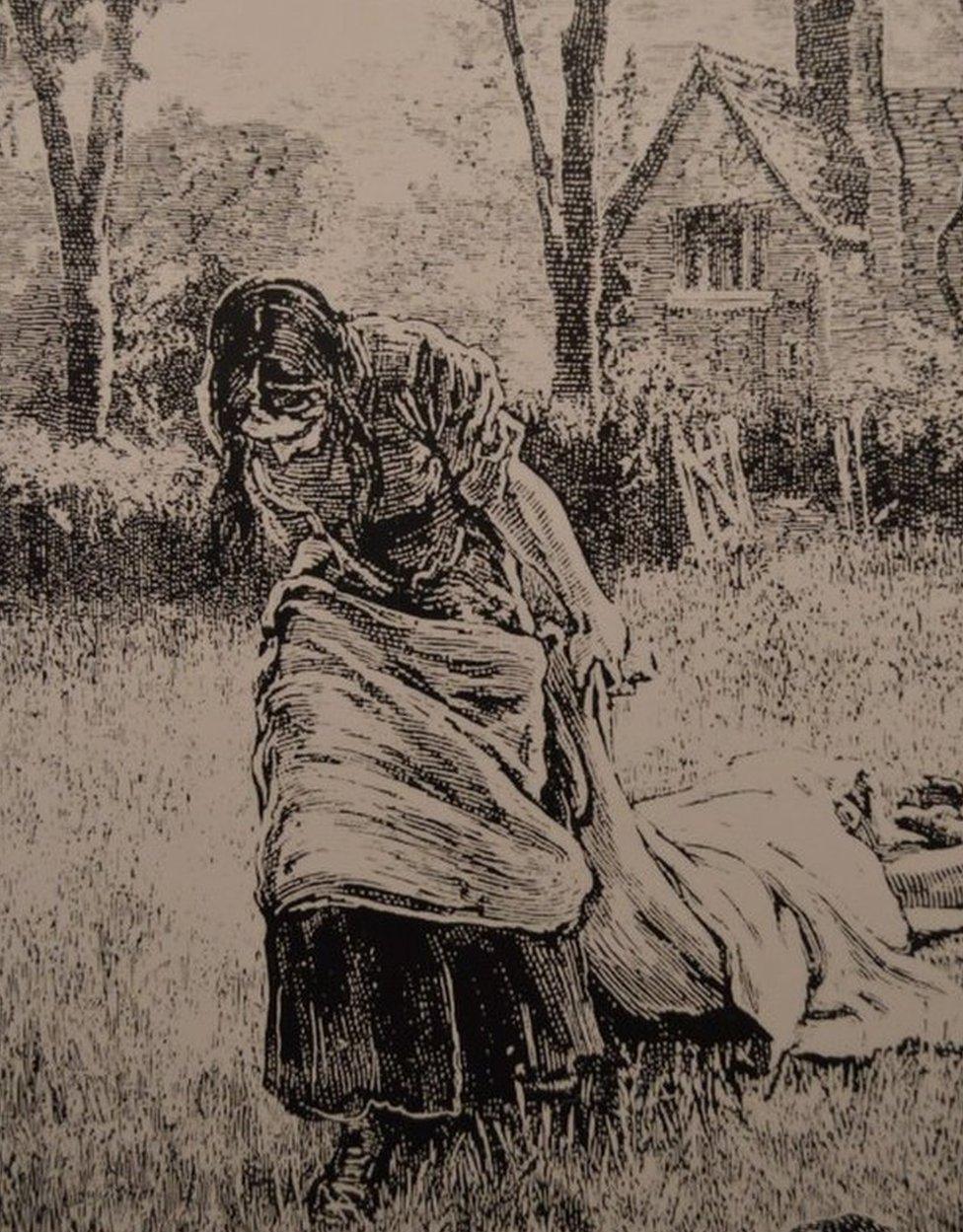
Elizabeth Hancock had no choice but to drag each of her children to a field next to the family farm and bury them
Mrs Plant said: "I cannot begin to imagine how she must have felt. To lose a husband and six children in a matter of eight days is unimaginable."
It is said people from the nearby village of Stoney Middleton stood on the hill and watched her - too scared to help.
This was now the reality of how the villagers were viewed from the outside, Mrs Plant said.
Another plague survivor, also forced to bury his own family, was Marshall Howe.
As the number of victims increased, and entire families were wiped out, Howe was tasked with the job of burying them. He was infected during the early stages of the outbreak, but survived.
Believing he could not be infected twice, he relished the job, often helping himself to the victims' possessions as his reward, Mrs Plant said.

Mrs Hancock's children's graves are in an isolated location to the east of the village
Howe would later bury his own son, William, aged two, and wife, Joan. It is possible his family was infected through the items he stole from the dead.
Mrs Plant, who is a direct descendant of Margaret Blackwell, one of the few villagers to have survived the plague, said: "It must have been terrifying, but every single family would have had that strong belief in God, and would not have feared death."
In his letters, Mompesson described the smell of "sadness and death" in the air. He also wrote about his wife, who had tended to so many of the dying, contracting the plague while helping others.
On 22 August 1666, they went for a walk in the nearby hills, and Catherine spoke about the sweet smell in the air. She died the following morning, aged 27.
The current rector, Mike Gilbert, said: "When you read Mompesson's letters - he must have assumed he was dying. In one he writes 'I am a dying man'.
"He was scared but he did it all the same. There was definitely that hope of heaven that kept them going, but it was phenomenally difficult to simply face it - it wasn't a nice way to die. 'I'm going to die in pain and there is nothing anyone can do about it'.
"It is almost overwhelming to think what it must have been like - I suspect fear stalked them every day of their lives at the time."
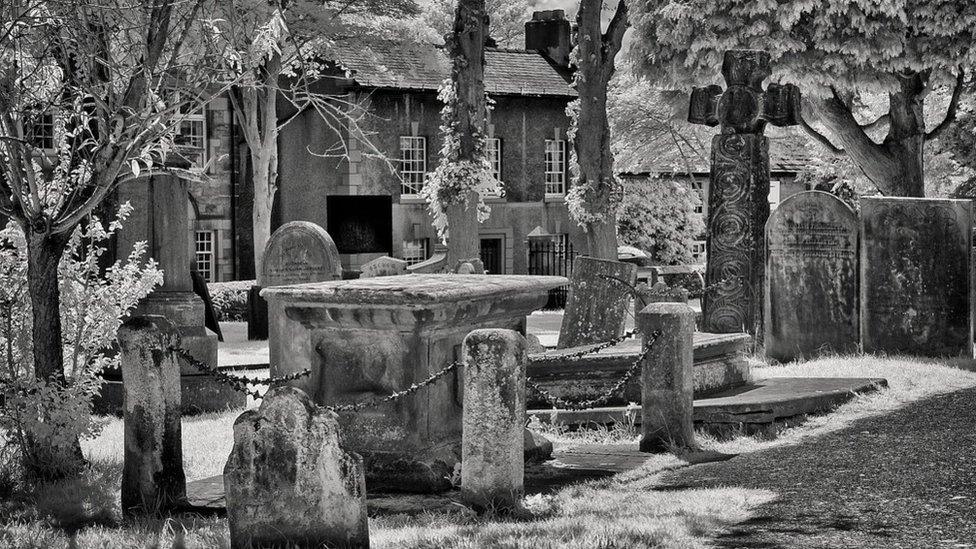
Catherine Mompesson is buried in St Lawrence's churchyard in a tomb erected by her husband
However, the worst of the pestilence was over. The number of cases fell in September and October, and by 1 November the disease had gone. The cordon had worked.
During the outbreak, Eyam's mortality rate was higher than that suffered by the citizens of London as a result of the plague.
In just over a year, 260 of the village's inhabitants, from no fewer than 76 different families, had died. Historians have placed the total population of Eyam at between 350 and 800 before the plague struck.
However, Mompesson knew his actions, and the courage of his parishioners, had probably saved thousands more.
He left Eyam in 1669 to work in Eakring, Nottinghamshire, but such was the reputation of the "plague village" he was forced to live in a hut in Rufford Park until the residents' fears had abated.
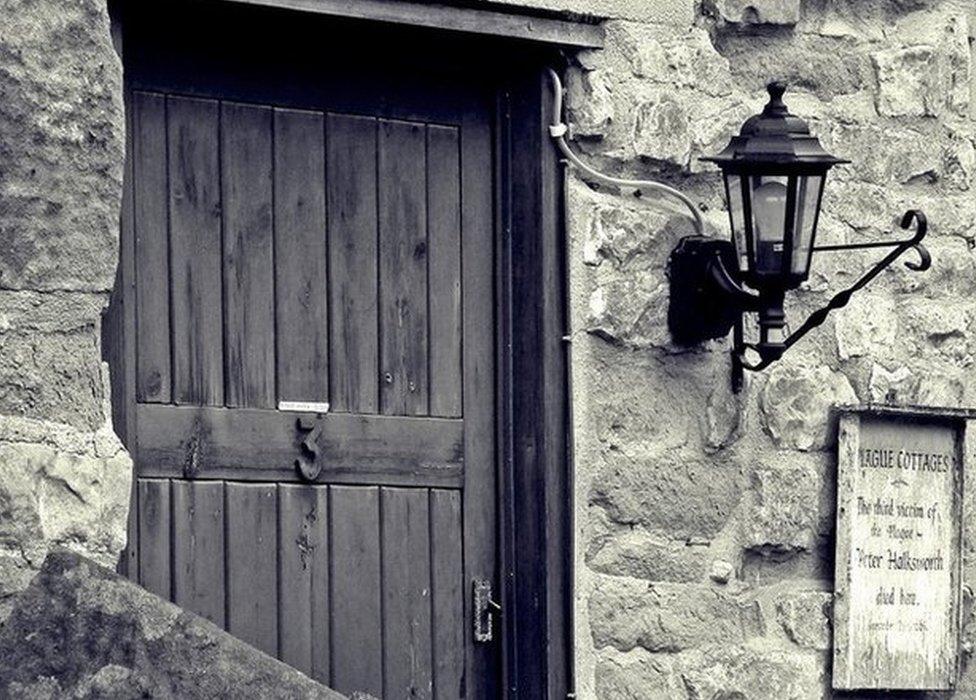
Plaques detailing the deaths can be seen on the walls of many of the houses in Eyam
Now, three and a half centuries later, the story is still well known by the people of Eyam.
Local historian Mr Thompson said: "Who would have thought they would have agreed to do that and put themselves and their families in mortal danger - which is what they did - so much so that at least a third of the population died.
"They knew they were risking life and limb but they still agreed to do it.
"If it means anything at all, you almost feel responsible to do something to remember it.
"There is an onus on the people in the village that you can't just turn your back on what the people did."
- Published8 September 2016
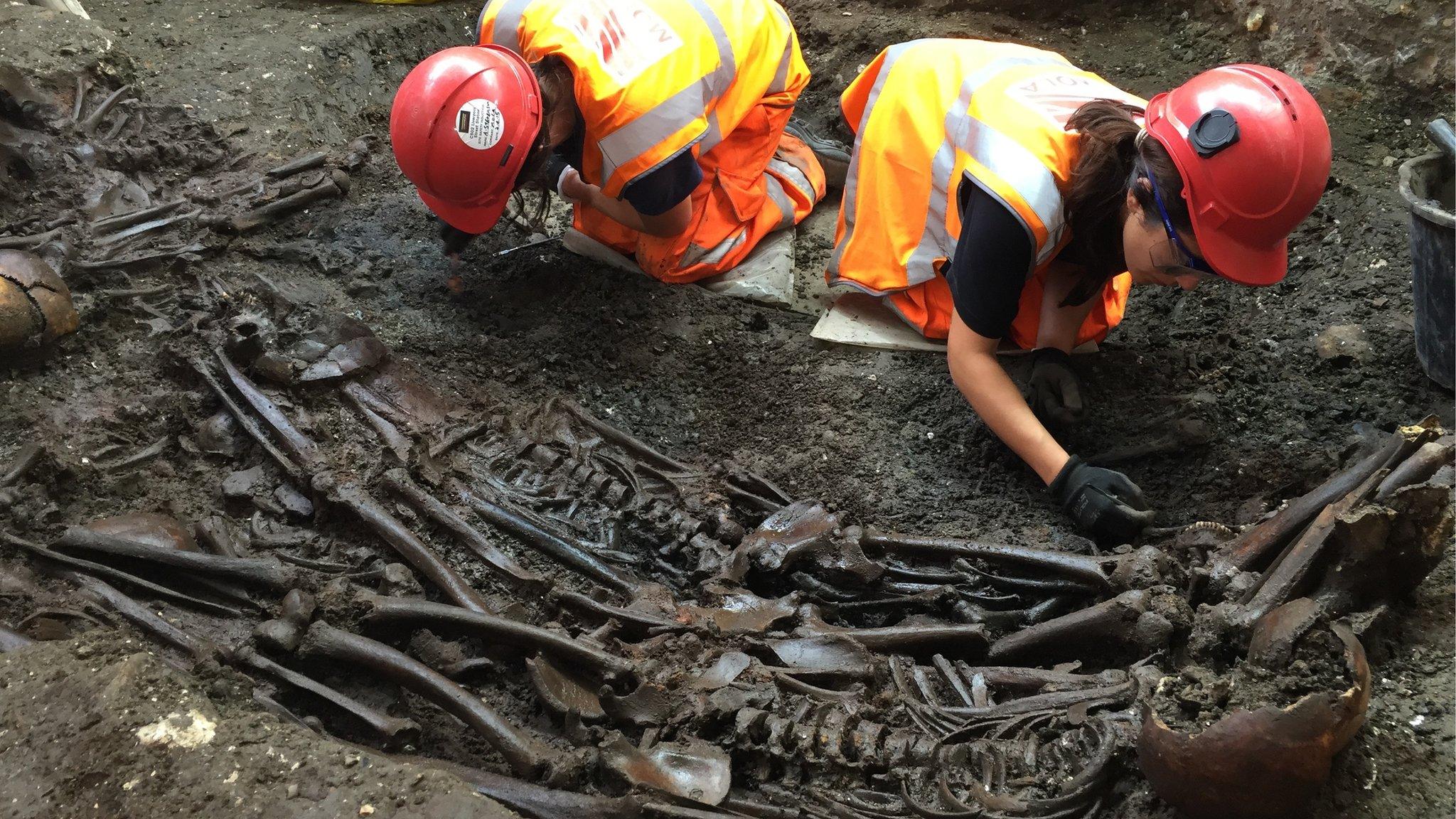
- Published7 September 2016
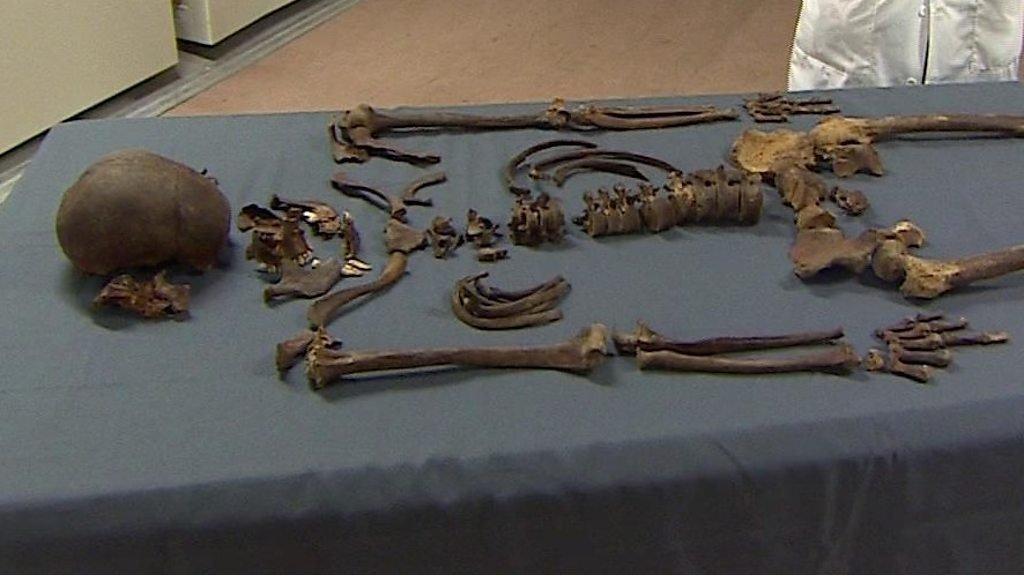
- Published13 April 2016
